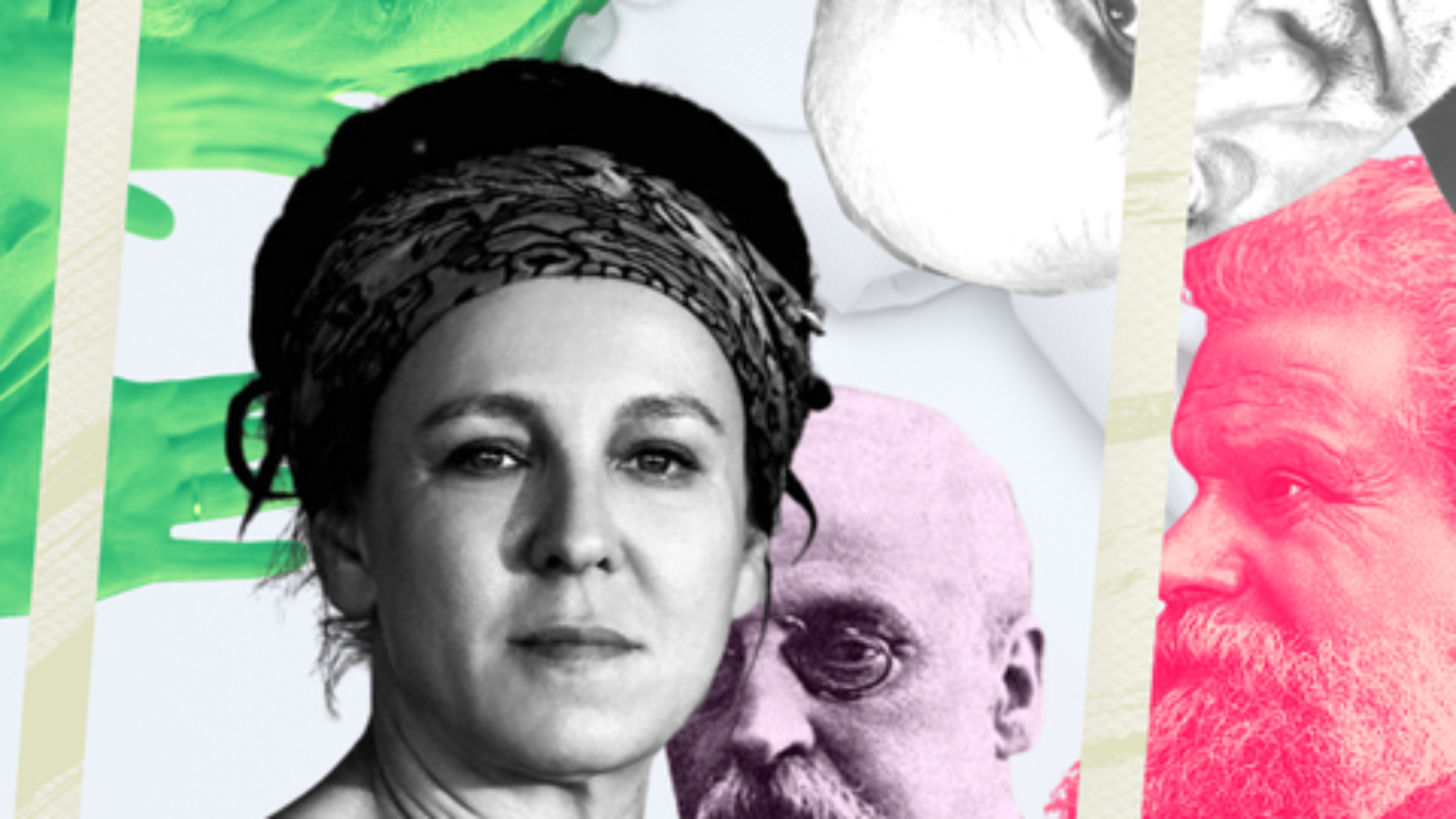Ireneusz Gielata
![]() Maps of Sienkiewicz.
Maps of Sienkiewicz.
The article is devoted to the Italian travels of Henryk Sienkiewicz. The perspective of the time-honored “Grand Tour” is replaced here by a maladic experience. The death of his wife, who died of tuberculosis, orphaned two children, condemned Sienkiewicz to a life of constant tension, in some state of feverish anxiety. And it is the record of this anxiety, fear, „fever” that constitutes a text trace, a cartographic record “mapping” the experience of disintegration.
Jolanta Sztachelska
![]() Looking for self. Reymont in Italy.
Looking for self. Reymont in Italy.
The article tells about the Italian journey of Władysław Stanisław Reymont in 1895, published as a series of correspondence entitled “The Italian Impressions. Notes”. The text reveals his fascination with Italy, but also the young author’s dream to become a Polish writer.
Alessandro Scarsella
![]() Long live Italy: Carducci, the strange Nobel Prize.
Long live Italy: Carducci, the strange Nobel Prize.
This article reconstructs the atmosphere surrounding the award of the Nobel Prize for Literature to Giosue Carducci in 1906, highlighting his anachronism and overtly nationalist and latent anti-Habsburg motivations. However, the twentieth-century reception of Carducci, from Benedetto Croce’s remarks to the opinions formulated at the dawn of 1968, would continue to emphasize his essential place in the canon of modern Italian poetry.
Tadeusz Sławek
![]() Pirandello, or how not to trust your reality.
Pirandello, or how not to trust your reality.
The essay attempts to present Pirandello’s esthetics as an heir of Piranesi’s esthetics of the ruin. As Umberto Eco claims, a turn towards fragments allows for abandoning the idea of the work of art as an accomplished whole, what is more, it locates the esthetic pleasure in a contemplation of a whole destroyed and fragmented. Thus, a draft becomes more interesting than a finished work. Literature holds control over form, that is over language, but – as Pirandello demonstrates – literature is a cold institution unable to contain the warmth and pulsation of life which always slips out of literature’s jurisdiction. Hence Pirandello’s work is an important episode in the history of Western rationalism and aims its critical edge against the failed attempts to construct a world according to the working principles of rationality and common sense.
Mariangela Lando
![]() Salvatore Quasimodo. Reception in anthologies: decline after apotheosis?
Salvatore Quasimodo. Reception in anthologies: decline after apotheosis?
Is Quasimodo a writer still relevant, or do the moods of his poetry ring false? The anthological reception of Quasimodo’s works seems to focus on his role as the undisputed interpreter of Hermeticism. It is Quasimodo who is placed among the main diagnosticians of the modern human condition – attributing to him a significant role in twentieth century literature, as evidenced by the international accolades bestowed upon him, which led in time to his being awarded the prestigious Nobel Prize in Literature in 1959. Deep human reflections, full of turning points, insights and original stylistic solutions, converge in his works. This paper aims to examine the anthology volumes used in secondary schools in recent decades, and to analyze the differences between the presence of Quasimodo’s texts and those of other authors contemporary to him, in light of the different approaches of curators and anthologists. The author is interested both in the authorial canon proposed to students and in the functional uses of excerpts from selected works by Quasimodo.
Józef Olejniczak
![]() Miłosz. North – South (intuitions and fragments).
Miłosz. North – South (intuitions and fragments).
The author interprets Czesław Miłosz’s poetry, following the Italian traces left in it. These are both echoes of travels to Italy and traces derived from reading Italian writers, fascination with painting, architecture and the landscape shaped by man. All these traces introduce the most important motifs of the poetry of the author of “Gucio Enchanted,” as well as the essential elements of the literary tradition for this poetry. They are also an image of the evolution of Miłosz’s poetics. The essay is written in the poetics of the fragment. Rather than drawing unambiguous conclusions, its author shares his interpretative intuitions. He carries out a careful inquiry into the secrets contained in Miłosz’s poems rather than presenting definitive answers. In a way, it “invites” you to study the poems of the author of “Three Winters.” These Italian “traces” lead, however, to the conclusion about the coherence of Miłosz’s poetic work.
Sara Quondamatteo
![]() “In the Heart of Destruction”. Miłosz and the recovery of poetry as mythopoiesis.
“In the Heart of Destruction”. Miłosz and the recovery of poetry as mythopoiesis.
Starting with an analysis of two works by Czesław Miłosz, namely Lullaby (1933/1934) and The World. A Naive Poem (1943), the essay aims at examining the process of the author’s rediscovery of the mythopoetic function of lyric poetry during World War II. Characterized by the use of a child’s perspective and imagination, marked more or less clearly by the experience of war catastrophe – both compositions are constructed by antithesis, and poetically founded on different forms of imagination in the service of an axiology which attests a radical transformation of the poetic quest.
Wojciech Ligęza
![]() “Dawning masterfully recast as morning” – creating the world. Around the poem Early Hour by Wisława Szymborska.
“Dawning masterfully recast as morning” – creating the world. Around the poem Early Hour by Wisława Szymborska.
This reading is projected against the background of Szymborska’s distinctive themes and philosophical assumptions, such as the fascination with the wonder of existence, reflection on the limits of human cognition, poetic games serving the creation of the world, or the complicated relations between what is real and what is imagined. In the interpretation of the poem Early Hour, the most important themes of considerations include the relationship between perception and overlooking, showing the metamorphoses of night and day, which allow us to understand the idea of renewing existence, an artistic approach to objects extracted from the darkness, using the painterly gaze, and a reference to the “Book of Genesis” in the intimate creation of the world – measure up to human imagination. Wisława Szymborska adopts an analytical and autocritical approach in her study of the morning.
Ewa Sławek
![]() Olga Tokarczuk’s Primeval and other Times – Cultural and Ecological Linguistics Perspectives.
Olga Tokarczuk’s Primeval and other Times – Cultural and Ecological Linguistics Perspectives.
Taking recourse to such concepts of cultural and ecological linguistics as the linguistic picture of the world, mental maps, stereotypes and linguistic ecosystem the article tries to reinterpret Olga Tokarczuk’s Primeval and Other Times. Our analysis demonstrates that the Nobel prize winning writer has constituted a historical, cultural, and social portrait of a part of Central Europe called “provincial Poland.” This cultural construction is composed of a system of truths and myths, as well as fictitious imaginings. These are mental cliches which still actively influence cultural and social behaviour in this part of the world. Ecological linguistics helped to identify ways in which Tokarczuk, assuming a proecological attitude, deconstructs the tradition of anthroponormative thinking.
Zofia Anuszkiewicz
The article is an interpretation of the first stanzas of the XI canto of Paradise in the Divine Commedy of Dante. The authorial reflexion, which is not connected directly to the events in the poem, has been analysed in its particular context – the sphere of the Sun, a place of stay of the saved endowed with distinct minds – and subsequently, as an independent composition, even if the instrument of the interpretation will be first of all a confrontation with other passages of the poem. The problem posed by Dante, still valid nowadays, is that of searching for simplified roads to happiness and fulfillment.
Tiziana D`Amico
![]() Bohemian Bible dated 1506. Czech book culture between the 15th and 16th centuries.
Bohemian Bible dated 1506. Czech book culture between the 15th and 16th centuries.
In 1506, the printer Liechtenstein published the “Biblij Cžeská w Benátkach tisšten” (Bohemian Bible printed in Venice). The Venetian Bible (as it is commonly called) was written in Czech and was commissioned by three Prague residents. This article aims to show the Czech Bible of 1506 as an interesting “object” that somehow connects two very distant cultural realities of the early sixteenth century: Venice, the most important center of European printing, especially humanist printing, and Prague, the center of Utrakism. This study will focus on three aspects: the situation of Bohemian printing art in the early sixteenth century, which has received the most attention; the reasons why the Bible is a “printed artifact”; and finally, the choice of Venice as the place of publication. The paper concludes with a brief reflection on the legacy of the Venetian Bible – a hybrid of two book cultures.
Agnieszka Pastucha-Blin
![]() The war for the perfect body. Metaphorical conceptualization as one of the persuasive discourse strategies.
The war for the perfect body. Metaphorical conceptualization as one of the persuasive discourse strategies.
This analysis draws attention to the particular aspect of metaphor, namely its persuasive force. Research made on linguistic material, coming from Internet portals indicate the presence of the WAR metaphor in relation to the conceptualization of caring for the body. This type of metaphorical conceptualization is one of the many persuasive strategies used by the authors of the analyzed texts in order to influence the recipients by imposing a specific vision of reality on them, but above all influencing their behavior, translating into decisions of a financial nature.
Alessandro Ajres
![]() Caparezza and the language of Italian rap. Annarita Miglietta: Sulla lingua del rap italiano. Analisi quali-quantitativa dei testi di Caparezza. Firenze 2019, 126 p.
Caparezza and the language of Italian rap. Annarita Miglietta: Sulla lingua del rap italiano. Analisi quali-quantitativa dei testi di Caparezza. Firenze 2019, 126 p.
Miglietta’s work (Sulla lingua del rap italiano. Analisi quali-quantitativa dei testi di Caparezza. Firenze 2019) focuses on qualities of texts by Italian rapper, Caparezza. Because of what he does with the language, it is pretty hard to find for him and for his songs a unique definition. The conceptual premise of the work in question is that the rapper from Molfetta represents something other than what we have heard up in Italy to this moment, and that we can compare him and his rhymes to poetry lines. The vocabulary is what probably most distinguishes Caparezza from the surrounding environment. An important part of his lexicon is joined to literature and the literary samples represent another indication of the specificity of Caparezza’s work compared to most Italian rappers. The rapper from Molfetta makes use of literary quotations in abundance and in a meaningful way, without relegating himself to a fashion quotation. He quotes for example in his texts Quasimodo, Leopardi, Manzoni, Dante Alighieri and some of his songs are directly inspired by writers (i.e. Dickens, Canzone a metà). In Italy he belongs to a kind of rap that we can call “intellectual”, or PhD rap, which has some similiarities with Polish intelingentny rap.

